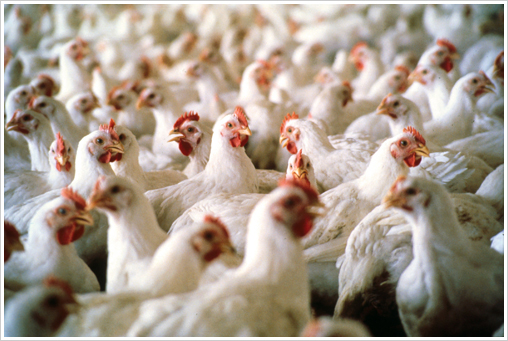
Agricultural News
NCC Files Comments Supporting RFS Waiver, Delivers 10,000 More
Thu, 11 Oct 2012 13:34:56 CDT

A full waiver of the 2013 Renewable Fuels Standard requirement would reduce the price of corn by more than $2.00 per bushel, according to economic data cited in comments submitted today by the National Chicken Council (NCC) to the Environmental Protection Agency in support of a full, one-year waiver of the RFS.
NCC also hand delivered almost 10,000 individual comments from those whose livelihoods depend on the chicken industry, almost three quarters of which came from chicken farmers.
"Our comments prove in detail that the RFS is causing severe economic harm to the U.S. economy, and the 2013 requirement must be waived in full," said NCC President Mike Brown.
"Today's corn crop report released by USDA verifies that this harvest will mark the lowest production since 2006. Despite 13 percent less corn than last year to go around, it is irresponsible to divert more than 40 percent of it to use as a second-rate motor fuel."
"A California poultry company just this week filed for bankruptcy citing rising feed costs, making it the eighth company in the last two years to file for bankruptcy, be sold or simply close its doors," Brown continued. "How many more jobs and family farms have to be lost before we change this misguided policy and create a level playing field on the free market for the end users of corn?"
NCC's comments are available in their entirety by clicking here. A summary of which is available below:
The comments cite an August 2012 report prepared for the Farm Foundation by three Purdue University economists that evaluated how an EPA waiver of the ethanol mandate would affect the corn and ethanol markets. Calculations from their model found that reducing the amount of ethanol blended into gasoline in 2013 would reduce corn prices by $2.00 per bushel, a nearly 25 percent reduction.
A decrease in the price of corn by $2.00 per bushel would significantly alleviate pressures on both consumers at the grocery store and the food, livestock and feed industries. Given the vital role of corn in U.S. food production, as the price of corn decreases, so do the prices of meat, poultry, dairy products, and the foods that contain corn-based sweeteners, starches, flours, and oils, as well as substitute products such as wheat and soybeans and any foods made using them.
A marginal decrease in corn price of 24 percent, based on a reduction in the price of corn by $2.00 per bushel, would result in a decrease of approximately 2.4 percent in retail food prices. USDA estimates that food prices will increase 3-5 percent next year. In other words, less than half of the price increase caused by the RFS requirement is equivalent to half-to-nearly-all of the projected increase in the price of food.
More dramatically, a decrease of $2.00 in the price of corn per bushel is equivalent to a decrease of $71.43 per ton of corn, which results in feed costs that are $32.14 to 47.86 lower per ton. The broiler industry uses 1.25 billion bushels of corn each year. Savings of $2 per bushel of corn would amount to $2.5 billion in annual savings to the chicken industry.
Since the RFS went into effect in October of 2006, the chicken industry has had to endure more than $30 billion collectively in increased input costs.
As processing plants find themselves unable to keep pace with the increasing costs of grain, the growers and farmers who produce poultry and livestock suffer. And when poultry processing plants shutter, the economic effects ripple through the entire local community, reaching those employed both directly and indirectly by the plant. The total direct and indirect employment
The U.S. chicken industry has suffered in the years since the implementation of the RFS, in contrast to the industry's average annual growth rate of 4.0 percent and historical resiliency even during difficult economic times. In 2009, U.S. broiler production decreased by 3.8 percent, the largest decrease since 1970. The years 2011 and 2012 each saw a 1 percent decrease in production, representing the first time in this period that the broiler industry has seen two consecutive years of negative growth. These recent trends demonstrate that a historically resilient industry has seen the greatest decrease in growth (indeed, it has shrunk) in more than forty years during the implementation of the RFS, when it has seen demand for one of its primary inputs drastically and artificially increased. Because of the importance of corn in so many aspects of food production, the entire food industry-and ultimately, the consumer-are suffering because of the RFS.
"Viewed together, these factors demonstrate the RFS must be waived to relieve the severe economic harm the RFS is causing," NCC's comments concluded.
WebReadyTM Powered by WireReady® NSI
Top Agricultural News
More Headlines...



















